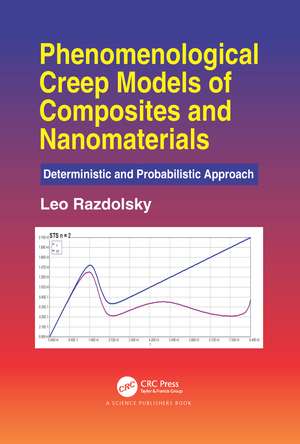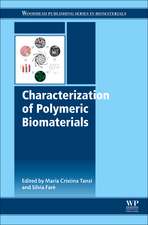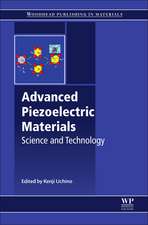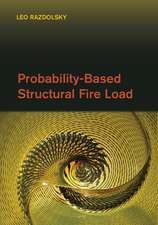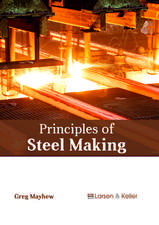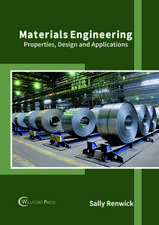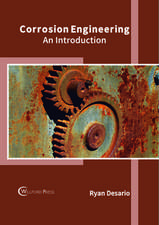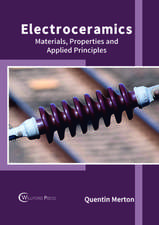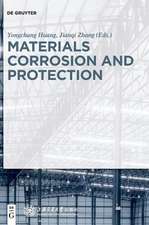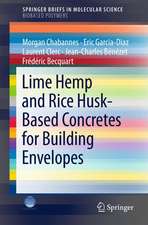Phenomenological Creep Models of Composites and Nanomaterials: Deterministic and Probabilistic Approach
Autor Leo Razdolskyen Limba Engleză Paperback – 31 mar 2021
Certain criteria have been used in selecting the creep functions in order to describe a wide range of different behavior of materials. The experimental testing and evaluation of time variant creep in composite and nanomaterials is quite complex, expensive and, at times, time consuming. Therefore, the analytical analysis of creep properties and behavior of structural elements made of composite and nanocomposite materials subjected to severe thermal loadings conditions is of great practical importance.
Composite elements and heterogeneous materials, from which they are made, make essential changes to the classical scheme for constructing the phenomenological creep model of composite elements, because it reflects the specificity of the composite material and manifests itself in the choice of two basic functions of the creep constitutive equation, namely memory and instantaneous modulus of elasticity functions. As such, the concepts and analytical techniques presented here are important. But the principal objective of this book is to demonstrate how nonlinear viscoelastic engineering creep theory can be incorporated into the general theory of mechanics of materials so that composite components can be designed and analyzed. The results are supported by step-by-step practical structural design examples and will be useful for structural engineers, code developers as well as material science researchers and university faculty. The phenomenological creep models presented in this book provide a usable engineering approximation for many applications in composite engineering.
| Toate formatele și edițiile | Preț | Express |
|---|---|---|
| Paperback (1) | 441.54 lei 6-8 săpt. | |
| CRC Press – 31 mar 2021 | 441.54 lei 6-8 săpt. | |
| Hardback (1) | 1285.17 lei 6-8 săpt. | |
| CRC Press – 16 ian 2019 | 1285.17 lei 6-8 săpt. |
Preț: 441.54 lei
Nou
Puncte Express: 662
Preț estimativ în valută:
84.51€ • 87.89$ • 70.82£
84.51€ • 87.89$ • 70.82£
Carte tipărită la comandă
Livrare economică 13-27 martie
Preluare comenzi: 021 569.72.76
Specificații
ISBN-13: 9780367780425
ISBN-10: 0367780429
Pagini: 414
Dimensiuni: 156 x 234 x 22 mm
Greutate: 0.58 kg
Ediția:1
Editura: CRC Press
Colecția CRC Press
ISBN-10: 0367780429
Pagini: 414
Dimensiuni: 156 x 234 x 22 mm
Greutate: 0.58 kg
Ediția:1
Editura: CRC Press
Colecția CRC Press
Cuprins
Preface. Introduction and Overview. Creep Laws for Composite Materials. Creep Models of Fibrous and Dispersed Composites. Deterministic Approach. Creep models of nanocomposites. Deterministic approach. Physical chemistry of nanoparticles. Phenomenological Creep Models of Fibrous Composites (Probabilistic Approach). Phenomenological Creep Models of Nanocomposites (Probabilistic Approach)
Notă biografică
Leo Razdolsky has 45 years of experience in structural engineering, with focus on composite structures, power plants and cooling towers. He is also adept in computer modeling, material science and nanomaterials. Dr. Razdolsky has been teaching engineering courses at the University of Illinois and Northwestern University, and is currently conducting research work connected with high temperature creep of composite structural elements and systems. He has authored three books in this area.
Descriere
The purpose of this book is to determine whether the nonlinear theory of Schapery or the modified superposition method could adequately model the creep behavior of composites.
